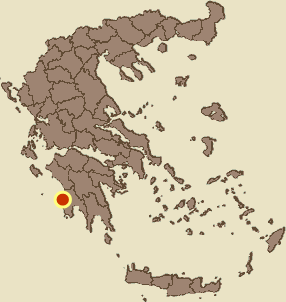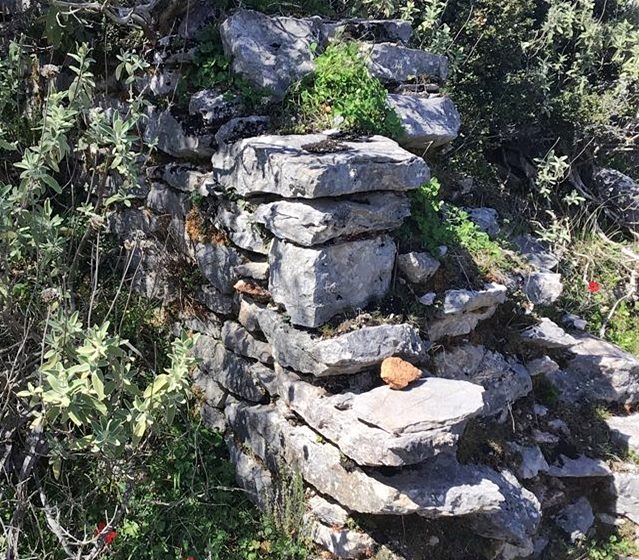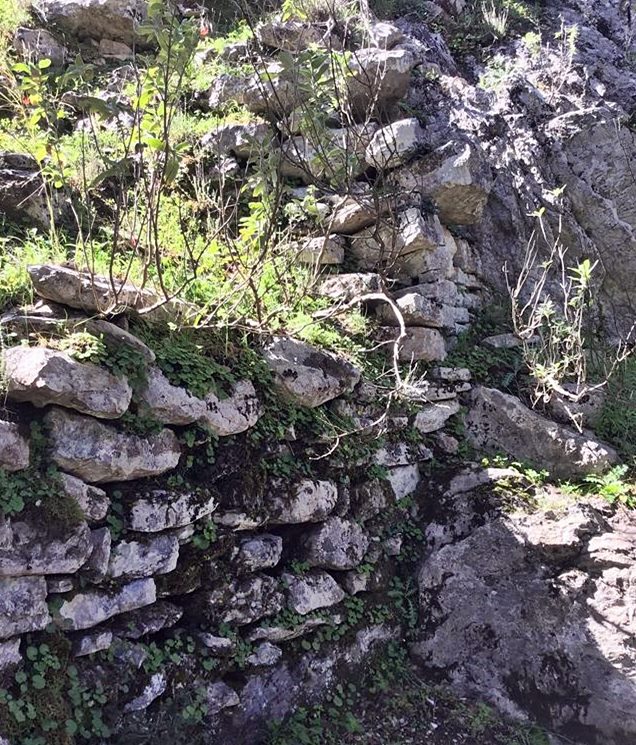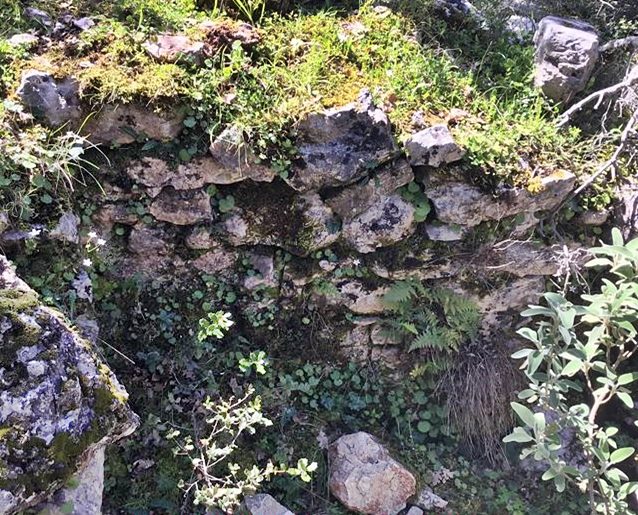Raptopoulo, Trifylia, Messenia,Peloponnese
Castle of Raptopoulo
| Location: |
| On a hill 1.2km SE of the village Raptopoulo in Messinia and 750m NW of the village Kloni |
| Region > Prefecture: |  |
| Peloponnese Messenia | |
| Municipality > Town: | |
| City of Trifylia • Raptopoulo | |
| Altitude: | |
|
Elevation ≈ 655 m (Relative Height≈150 m) |
| Time of Construction | Origin | |
| perhaps 13/14th cent. | FRANKISH |
|
| Castle Type | Condition | |
| Castle Ruins |
In Ruins
|
Remains of a medieval building, probably a tower, in Trifylia, on top of a hill with the toponym “Kastro”, between the villages of Raptopoulo (or Raftopoulo) and the almost abandoned settlement of Kloni.
Raptopoulo is 21 kilometers south of Kyparissia.
History
Both Raptopoulo and Κloni have exist for many centuries and are recorded in the Venetian census of Grimani of 1700 with their current names, approximately, Raftopolo and Cloqni respectively. There are references to these settlements in other Venetian documents as well.
Especially for Raftopoulo, we can assume with certainty that it was founded, at the latest, at the beginning of the 15th century, given that the church of Agios Nikolaos that exists in the village has an engraved inscription above the entrance that reads “July 1418”.
At that time, the beginning of the 15th century, the area was the property of the prince of Achaea Centyrione II Zaccaria. Later, after 1432 and the death of Zaccaria, it came, like the whole Peloponnese, under the control of the Byzantines of Mystras.
All this does not help us to date the ruins on the hill. It is possible that it was built after the foundation of Raftopoulo, i.e. in the 15th century. But in that very fluid period with the decline of the Franks and later of the Byzantines and with continuous raids by the Turks in the Morea, no one was in the mood to build towers. It is most likely that the tower on the hill was built in the earlier centuries of the Frankish reign, i.e. sometime in the 13th or 14th century, when the area was a Frankish fiefdom.
Having said this, we cannot rule out that it might have been built during the Byzantine Period, before the arrival of the Franks.
From the historical sources there is no mention of the existence of a tower between the villages of Raptopoulo and Kloni.
Structure, Fortification & Buildings
At the top of the hill there is a plateau dominated by a rocky flat outcrop with a surface of about 1000 sq.m. At this point there are buildings with binding mortar that are medieval. The position and the type of ruins show that it was probably a watch tower.
The site was superficially investigated in 2002 by the 5th Ephorate of Antiquities. The report from the Archaeological Bulletin (issue 56-59) is as follows:
At the Kastro site, south-southeast of the settlement of Raptopoulo, Tripilas community, in 2002, according to suggestions from the inhabitants of the village, remains were found of a construction on the southern slope of a rocky outcrop.
Specifically, it is a space with a rectangular plan, which includes at ground level an irregular elliptical well of sufficient depth. In its northern part, walls are preserved at a height of 1.50m, while their thickness on the western side reaches 1m. The masonry of the building consists of stones, binding mortar and a few fragments of bricks.
It is likely that it functioned as a single defensive unit, a kind of watchtower, since it is located on the point of the hill with the greatest possibility of visual surveillance.
Its dating is difficult due to a lack of evidence, but it could be placed in medieval times.
To the west of the building, sporadic wall foundations of semi-worked stones were found, without the use of binding mortar.
| First entry in Kastrologos: | May 2023 |
Sources
- Website Αριστομένης ο Μεσσήνιος - Ραπτόπουλο Μεσσηνία: Μεσαιωνικός πύργος (Απρίλιος 2023), φωτογραφίες Βασίλειος Χάντζος
- Βιργινία Αλμπάνη - Νίκος Κοντογιάννης - Νιόβη Μπούζα (5η Εφορεία Αρχαιοτήτων), ΑΡΧΑΙΟΛΟΓΙΚΟΝ ΔΕΛΤΙΟΝ, τεύχος 56-59/Β4 (2001-2004), σελ.351
- Info by Yorgos Costopoulos
|
|
| Access |
|---|
| Entrance: |
| Free access |










